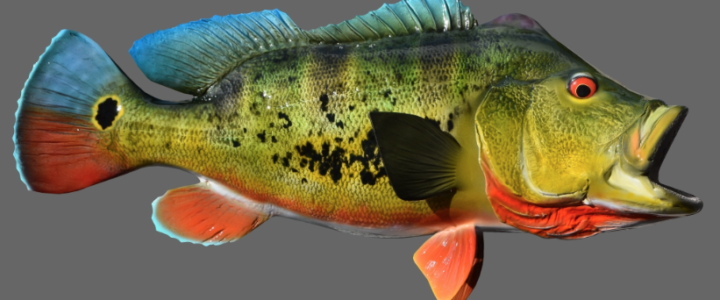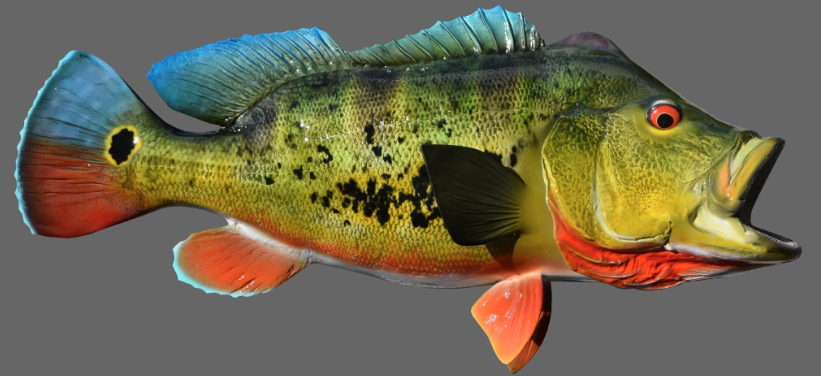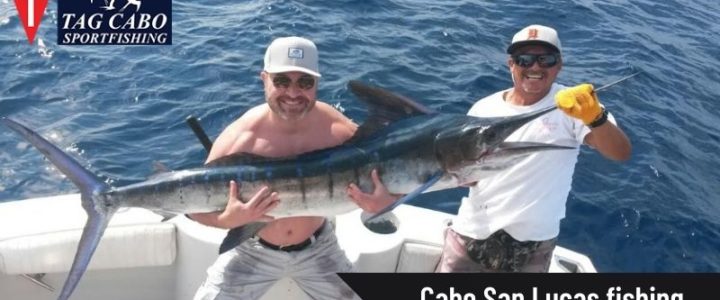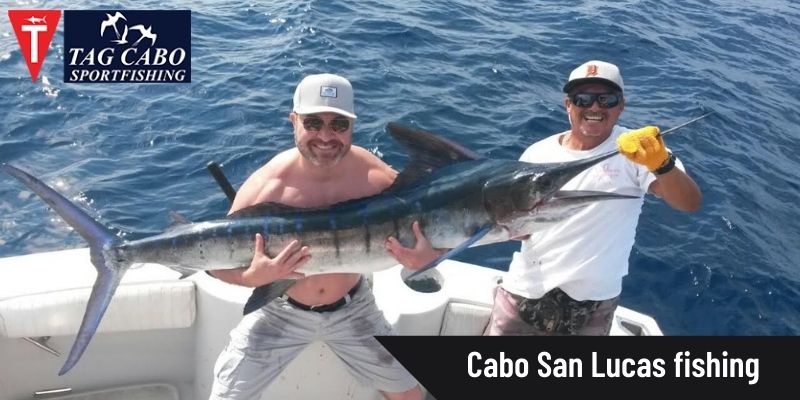Roosterfish fishing guides in cabo San Lucas
The Roosterfish is one of the most unique looking fish in the ocean. It is the only species in its genus Nemtistius. It’s distinctive feathery dorsal fins give it away as it slashes through the water hunting down baitfish. It generally feeds not far from shore, sometimes almost beaching itself as it chases bait fish in the surf. Some big ones are occasionally landed from shore.
Roosterfish are often found over sandy bottoms, and tend to follow schools of baitfish around specially mullets. Rocky points surrounded by sandy areas are always good spots to try. They often migrate up and down coastlines, sometimes for hundreds of miles and can completely disappear from areas that were filled with them a short time ago.
Despite being regarded as a poor tasting fish, it is highly sought after because of its striking appearance and fighting qualities. It is one of my favorite gamefish. It maxes out in the 100lb range but anything over 50lbs is a nice sized fish. Most are released. They are found exclusively in the Eastern Pacific from Baja to Ecuador.
Roosterfish are extremely strong and will pull well above their weight, but rarely go into rocks and break you off. They may make an occasional jump, but that’s rare. This gives you a decent chance of eventually landing them even if you are a little under gunned with you tackle. Be prepared for a very tough battle though.
Roosterfish are a light tackle fisherman’s dream. Like all fish in the Jack family they fight hard, but unlike some Jacks they do not generally go into rocks event though they often live near rocky areas. Therefore, you can land some pretty big fish on pretty light tackle. A Talica 16 second generation reel should handle pretty much any Roosterfish.
Roosterfish readily attack lures and bait. They are often seen feeding at the surface as they splash around chasing baitfish. They will come right up to shore, sometimes chasing baitfish onto the beach. Their distinctive dorsal fin is a dead giveaway and quickens the pulse of any angler who sees it.
Roosterfish are much easier to catch on live bait than lures. Dead baits can work on occasion, but if you want to maximize your chances you should slow troll a large live baitfish. Roosterfish sometimes play with the bait for a while, so you have to wait until you are sure they have engulfed the bait before setting the hook. Small fish in the jack family are usually good, as are Ladyfish or Lookdowns if you can catch them. Personally I always use circle hooks for these.
Cabo San Lucas have roosterfish all year long but from June to September you can catch monster roosterfish from 30 to 50 feet deep using live mullets. The East Cape of Baja also has a good fishery in the summer and that is the place to go if you want to catch one on the fly or from shore. La Paz sometimes has some nice ones in the summer, Panama and Costa Rica have their share of big ones as well.
Most Roosterfish, especially the bigger ones, are generally not easy to land on lures. They sometimes take poppers that are retrieved rapidly, but many times they just follow the lure and then turn away. I have gotten a few on blooper/chugger type poppers worked aggressively with big pops. The one below was caught on a Nomad Chug Norris popper, which has produced a few for me.
Lures that skip on the surface, like the GT Ice Cream lure or the Roberts Ranger lure sometimes get them when they are aggressive.
They occasionally take trolled Rapala-type plugs and jigs but you probably don’t want to rely on those if you are serious about targeting them.
For more information on contracting a professional roosterfish fishing guide in Cabo San lucas email us at tagsportfishing@gmail.com or click on the link to fill a form. Cabo roosterfish fishing

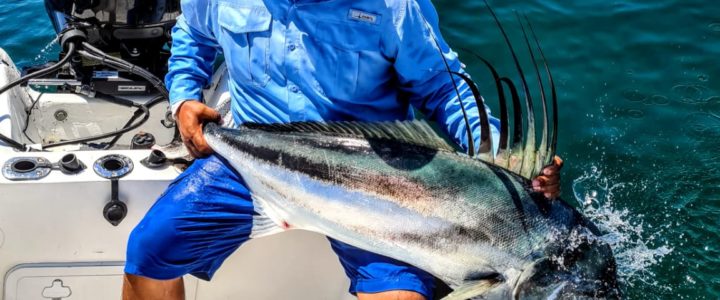
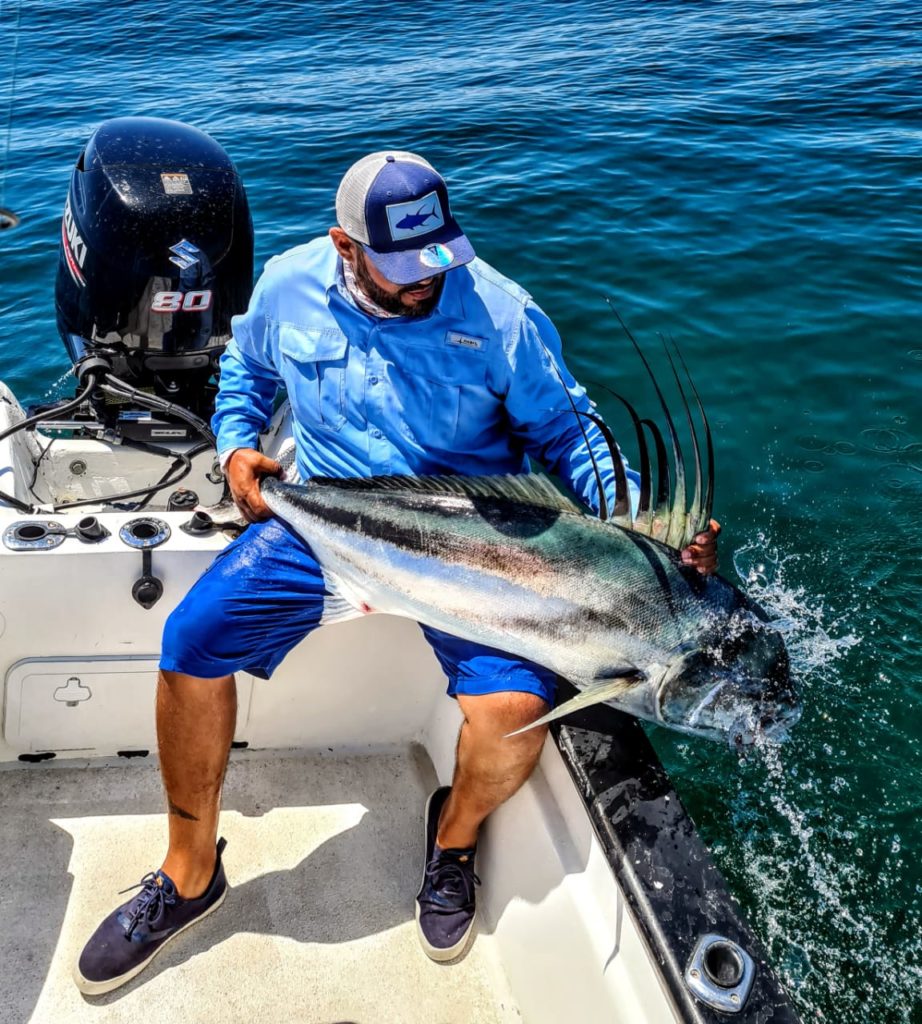
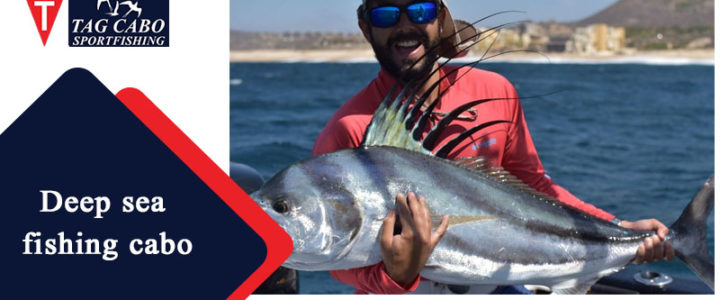
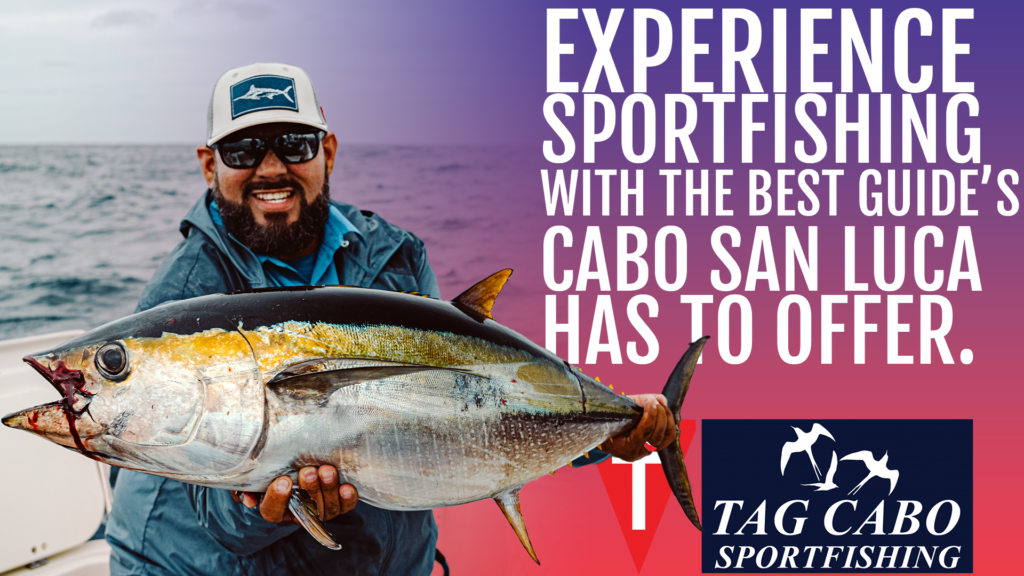
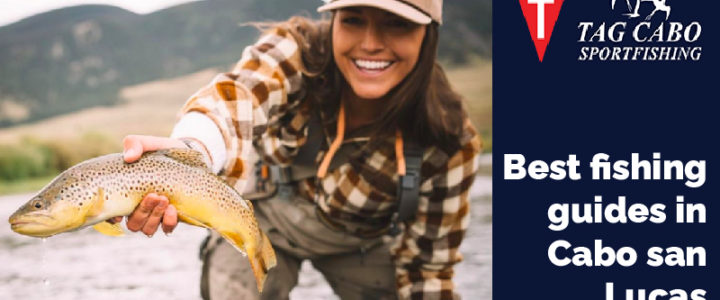
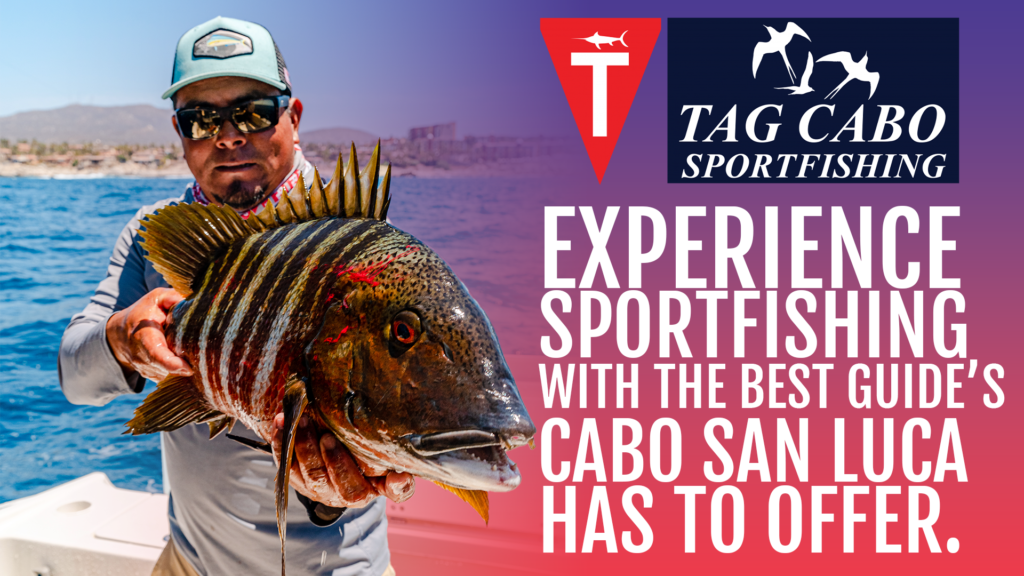
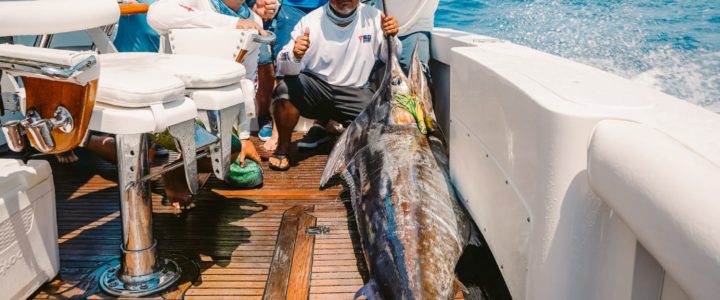
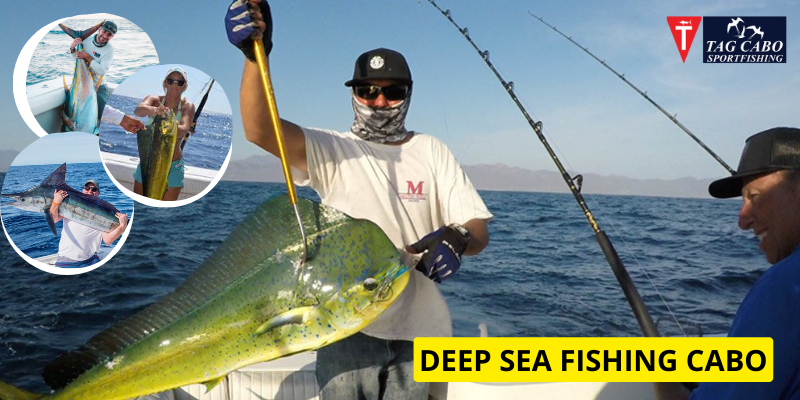 If you love deep-sea fishing then Cabo San Lucas should be your destination.
If you love deep-sea fishing then Cabo San Lucas should be your destination. 